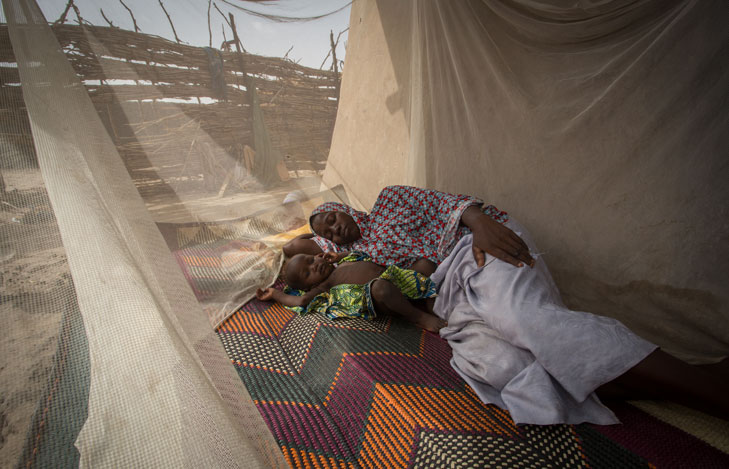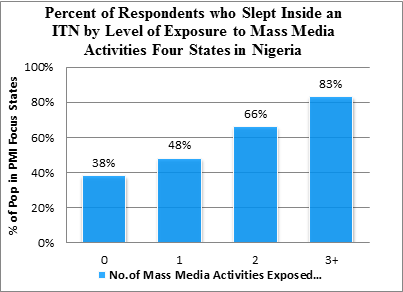Since 2014, the U.S. President’s Malaria Initiative (PMI) has supported the National Malaria Elimination Program in Nigeria to implement a comprehensive, evidence-based social behavior change communication (SBCC) strategy. Through the John Hopkins University (JHU) Health Communication Capacity Collaborative (HC3) project, PMI supports a combination of mass media, educational entertainment, and interpersonal communication activities.
The PMI-supported JHU/HC3 program developed a monitoring and evaluation plan for SBCC activities that includes an Ombibus survey every 6 months. This is a national market research survey that provides useful information for program planning and assessment. The June 2016 Omnibus survey assessed the level of exposure to four mass media interventions:
- Newman Street Nollywood television serial drama;
- “Play Your Part” national malaria theme song and music video;
- “Play Your Part” weekly radio show
- 60-second radio spots on malaria issues featuring the main character, Oga Bulus.
The assessment took place in four states: Akwa Ibom, Benue, Kebbi, Nasarawa, and Zamfara. Approximately 16 percent of people surveyed had been exposed to at least one of these mass media interventions. At the time of the survey, the TV serial drama and the malaria theme song had been on the air for about 1 year, the weekly radio show had been on the air for about 3 months, and the radio spots had been on the air for about 1 month.
The results show that exposure to PMI-sponsored mass media activities is strongly associated with increased usage of insecticide treated nets (ITNs). There was a strong and statistically significant exposure-response relationship observed; the more mass media malaria messages a person heard, the more likely they were to sleep inside an ITN. About 38 percent of those who were not exposed to any PMI mass media messages slept inside an ITN, compared to 48 percent of those exposed to one, 66 percent of those exposed to two, and 83 percent of those who were exposed to three or more mass media messages (see chart).
The four states included in the analysis were targets of a mass media campaign within the previous two years of the survey. Approximately 74 percent of respondents reported that their household had at least one net. The assessment took place in households with at least one net, and controlled for the number of nets in each household, household size, and other socio-demographic factors.
According to this analysis, it is important to sustain the mass media campaign to increase the proportion of people who have exposure to the mass media interventions. Based on these findings, the PMI-funded HC3 project expanded the radio mass media program and added a television campaign. The sustained mass media campaigns are expected to contribute to continuous and higher levels of ITN use in Nigeria.


